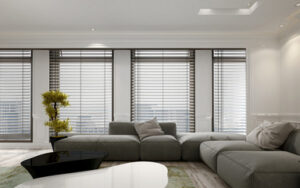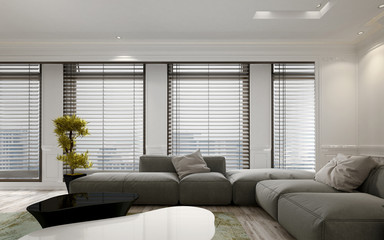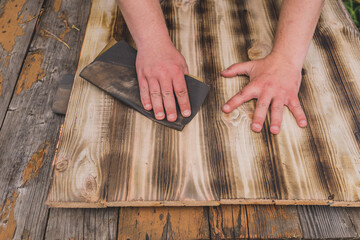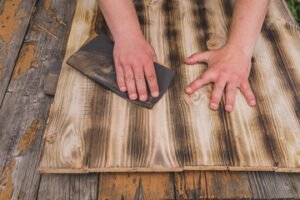Custom Blinds and Shades KY offer a wide range of colors, fabrics, textures and styles. Expert will help you select the options that best complement your home’s decor and style.

Unlike ready-made window treatments, custom blinds are made to order and built to last. That means they’re better in quality, safer for children and reduce waste.
Blinds have horizontal slats that can be raised, lowered and tilted to control the amount of light entering a room. They are available in a variety of colors, textures and styles to suit your decor. Blinds are durable and easy to clean, and can offer privacy, security and light filtration in addition to style.
Shades have a more flexible open-and-close operation. They are crafted of soft fabrics that come in various colors, weaves and opacities to match your decor while providing privacy, light filtration, energy savings and sun protection. Some shades fold like an accordion or use a roller to provide a sleek, modern look. Others have a solid piece of fabric that can be rolled down to the window sill and are easily motorized.
Choosing between custom blinds and shades depends on your preferences, functionality and budget. Blinds are less expensive than shades, but both have unique benefits that can improve the overall value of your home.
Off-the-shelf blinds are made in a limited number of standard sizes and are designed to fit most windows, so they’re not ideal for every home. They can be a good choice for a quick fix, but they’re usually not as effective at managing light or creating privacy as custom-made window treatments.
Custom blinds are manufactured to your exact window size, so they offer better light management and a more precise fit. Many of our blinds and shades are available in a cordless option that’s child and pet-safe. The cordless LiteRise system uses an ergonomically designed wand that allows you to raise and lower your window coverings without the need for a cord. For a more sophisticated option, consider our PowerView+(tm) Automation that lets you control your blinds and shades with an app on your smartphone or tablet.
Both blinds and shades can be customized with an optional liner that blocks out heat, glare and UV rays. The liners can be sewn into the fabric or, in some cases, can be added separately. They’re particularly useful for west-facing windows or in a room with a lot of sunlight that can cause fading of furnishings and fabrics.
Privacy
Custom blinds and shades aren’t just about covering windows, they elevate the aesthetic of a space and offer a high level of precision when it comes to light control and privacy. The sheer amount of options available means that there is truly a style to suit every taste, whether it’s sleek and modern, traditional or somewhere in between.
The beauty of choosing the perfect window treatment is that they can be tailored to fit your exact needs and preferences. That’s especially true when it comes to opacity. Sheer and semi-sheer fabrics are ideal for spaces where you aren’t concerned about people seeing in, like living rooms or dining areas. On the other hand, room-darkening and blackout fabrics are ideal for bedrooms or media rooms to help ensure a restful sleep environment.
To address this, Hunter Douglas offers multiple opacity options across their Pirouette, Silhouette and Luminette shade styles. Each has their own fabric selections, opacity levels and pleat sizes, making them the perfect solution for any space in your home.
In addition to light filtration and privacy, many of the shades we carry also offer energy savings, helping to cut your heating and cooling costs all year long. That’s especially the case with our Bali cellular shades, which are specially designed to trap hot and cold air between your window and the outside, giving you big savings on your energy bills.
The energy efficiency of our shades can even be boosted with a layer of insulating foam, which will help your windows to retain heat in winter and cool in summer. This can add up to significant savings on your energy bills over time, making them a smart investment for any home.
Blinds and shades come in a wide variety of textures, colors and styles, giving you the freedom to choose a look that suits your taste. The most important factor when it comes to selecting the right style for your home is understanding your windows’ measurements. If you’re unsure of what size your windows are, be sure to talk to one of our experts, who can help you measure your windows accurately and guide you through the process of finding the right shade for your home.
Energy Efficiency
If you are looking for a window treatment to save energy, blinds and shades are a great option. Their insulated designs trap warm air in winter and cool air in summer, helping you reduce your energy costs without cranking up the AC. Plus, many styles come in a wide range of opacities that block out incoming light from the sun. This means you can still enjoy natural light during the day while keeping your home comfortable and reducing glare.
Blinds are available in a wide range of materials and colors to match your home decor. They can also be custom-made to fit your windows perfectly. That said, they can be a little more expensive than ready-made options. One reason is that they are typically made using cheaper materials. They are also often mass-produced and made overseas, which can be a concern for some homeowners who want to support American workers.
The best option for energy efficiency is to choose cellular or solar shades. These window treatments use cutting-edge fabrics to help reduce your energy bills. For example, cellular shades with honeycomb-shaped pockets trap air, making them effective insulators. They also come in double- and triple-cell designs to increase energy savings. Light filtering and blackout fabrics are also available to give you more control over your home’s temperature. You can also get more control over sunlight by choosing top down/bottom up shades.
You can even earn a federal tax credit for choosing certain energy-efficient window treatments, which is a major benefit to consider. If you’re interested in adding these stylish and energy-efficient window treatments to your home, reach out to us today. We’ll connect you with a local window specialist who can answer any questions you have and set up a free consultation.
If you’re not ready to schedule an appointment, take a look at our extensive online collection of blinds and shades. Just keep in mind that you’ll need to measure the size of your window frames before ordering. If you are ordering blinds or shades for an existing home, this should be relatively easy to do. However, if you’re outfitting a new home or building a home from the ground up, it may be more difficult to measure your windows accurately.
Style
Custom blinds and shades are made to fit your windows perfectly, so they look better than off-the-shelf options that may leave gaps. This makes your home feel cozy and more put together. Additionally, custom window treatments are designed to last longer than off-the-shelf blinds because they’re built to be more durable and sturdy.
While blinds have slats that open to let light in and close to block it, shades are designed with fabric or woven materials that offer varying degrees of privacy and opacity. Both styles are great for manipulating the amount of natural light in a room, but shades are an ideal choice for rooms that need more privacy or UV protection than blinds can provide.
Shades also come in a wide variety of fabrics, textures and colors, making it easy to find a style that fits your design preferences. They are a sleek, modern option that can be customized with features like automation, cordless operation and top-down/bottom-up functionality.
Choose from a wide selection of shades, including honeycomb cellular shades that trap hot and cold air to help reduce your energy bills all year round. For a more traditional, elegant and tropical look, try natural custom woven shades made from bamboo, reeds, grasses or woods.
Other types of custom shades include roller shades, which have a simple, sleek and minimalistic look that can be customized with your choice of colors, patterns, opacity and operating systems. Woven woods and natural fibers, such as jute, rattan and bamboo, also offer texture and a neutral palette to blend with any color scheme or décor.
If you want to make a statement or elevate the aesthetic of your space, try pairing a window shade with a dramatic valance or drapery to complete the look. Regardless of what your goal is for your home, you can create the comfortable and functional living space you desire with custom blinds and shades from Louisville Blinds and Drapery.



